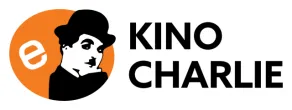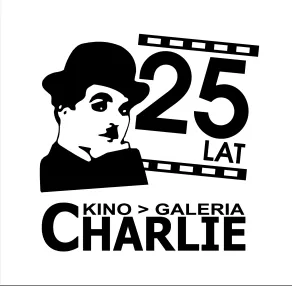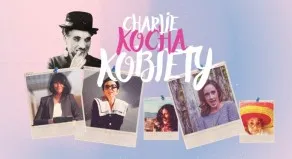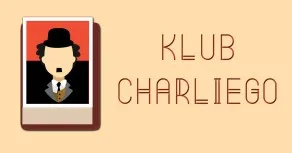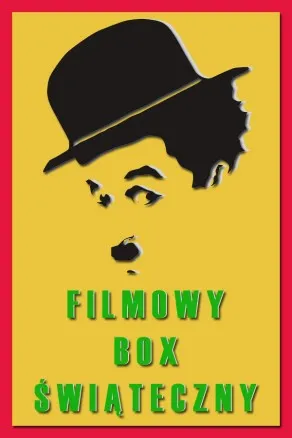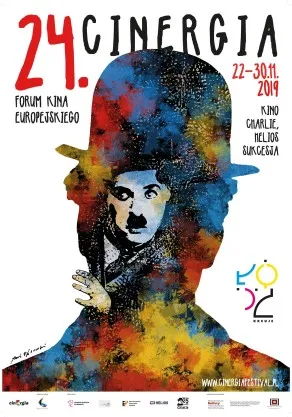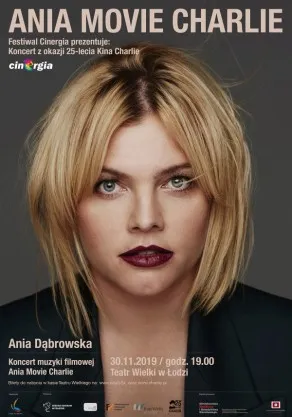
STRONA GŁÓWNA
/
REPERTUAR
/
ZAPOWIEDZI
/
WYDARZENIA
/
FESTIWALE
/
KINO
/
CENY BILETÓW
/
KONTAKT
FOTORELACJE
/
ZŁOTY GLAN
/
DLA SZKÓŁ
/
CHARLIE OUTSIDE
/
OPEN CINEMA
/
SKLEP
/
POLITYKA RODO
|
BRITISH ANIMATION AWARDS - NAJLEPSZE BRYTYJSKIE ANIMACJE Program przygotowany we współpracy z British Council w Warszawie 24 i 27 listopada 2004 r., kino Charlie2
ARTICLE
For many years now British animation has enjoyed a very high reputation on the international scene - for its astonishing range and diversity, both in subject matter and technique, and the uncompromisingly adult orientation of so many of its animated short films. British Animation Awards (BAA for short), was launched in its current format in 1996, to highlight this very diversity, via a bi-annual event that gives awards are given in 19 categories. The "Best of BAA - 1994-2004" series of 5 DVDs were produced, in collaboration with the British Council, in response to the many requests received - from animation fans, advertising agencies looking to spot up and coming talent, and teachers - because little of this work is generally available, and provides an overview of the last decade's production. Background to the British Animation Renaissance The last decade has seen many changes in the British animation scene, but it also worth recalling some of the factors that led to the "British Animation Renaissance" that began in the early 1980s, with the creation of Channel 4 television. C4 was established by government edict, in 1982, to bring new kinds of programming to TV, different to what was on offer on other existing channels. C4 took an extremely imaginative and approach to this remit and established the first TV commissioning editor for short films aimed at adult audiences. This was a major innovation in British TV, where animation had previously been considered mainly as childrens' entertainment. Several factors contributed to the extensive pool of talent in the UK that C4 were able to draw on. First, the long-standing tradition of diversity and experimentation in art-school education. This had already, in the late 50s and 60s, fed into creating the British tradition of technically sophisticated and imaginatively innovative animated commercials. Animation has been used in adverts for every conceivable kind of product, not just children's toys or sweets, unlike the situation in most other countries. The development of post-graduate animation courses - at the National Film and Television School and the Royal College of Art - also did a great deal to stimulate new forms of animation. Further encouragement came from the Arts Council of Great Britain who in the late 70s began funding 'art' or 'personal' animation films. So when C4 began commissioning animation there was a lot of talent out there, able and eager to grasp the opportunity to make short films. What was so different about these films was their range of subject matter: from 'animated documentary' (from Aardman Animation's celebrated 'Creature Comforts' series to the moving autobiographical account of a World War survivor, Silence) to work based on William Burroughs' writings (Philip Hunt's Ah Pook is Here) and an extraordinary range of different styles and techniques. This exciting and innovative work in turn attracted new talent into animation, as art students who might have thought animation was only ever 'funny cartoons' discovered it could be a significant form of self-expression. The last decade As British animation began to make its mark - with countless international festival awards, Oscar nominations and winners - both BBC Bristol and S4C (the new television channel for Wales) also started funding adult animation. The BBC's successful home video label enabled additional finance for the ambitious and higher budgets for half-hour TV specials like Aardman's Wallace & Gromit films, and Flatworld , by the Oscar-winning Daniel Greaves. C4 continued to innovate, in co-production with the Arts Council, with the 'Animate!' production scheme which funds more experimental films, and encourages experimentation with new technologies and mixed media. Award-winning examples are Sarah Cox's 3 Ways to Go; Jonathan Hodgson's adaptation of Charles Bukowski, The Man with the Beautiful Eyes andFeeling My Way; Peter Collis's hypnotic exploration of nature Staggerings , Robert Bradbrooks' moving family history,Home Road Movies, and Chris Shepherd's astonishing combination of live-action and animation, Dad's Dead. Culture & Commerce One particular feature of British animation is the mutually productive relationship between commercial work - animated ads, TV series, TV and film graphics, music videos and short films of a more personal nature. Ad agencies are always looking out for distinctive and unusual styles - because they want commercials that stand out, and make an impact on TV viewers. Animated adverts can function as a kind of subsidised form of R&D (research and development). High-budget commercials provide a good living for many animators; they can also provide opportunities to try out new techniques, and access expensive post-production facilities, and such experience can feed back into more personal work. And although pressures arise from tight deadlines, and the demands of the client, it is a different kind of pressure from the tortures of self-expression in a 'personal film'; in short, a valuable exercise of their talents. Aardman's 'Creature Comforts' series led to a series of highly successful commercials using the same characters, and they continue to produce prize-winning ads (e.g. Tenant's Pintlings, Knobs in Space, Smartipants). Animation is also often used for programme title sequences, and also for television very short and distinctive "idents" or "stings" - that seek to "brand" the personality of the TV channel. TV series - whether for adult audiences or, more commonly for children, is a very competitive area, and also necessitates the ability to work with, and to, the editorial requirements of the TV channels , and to work as part of a team. Scripts are all important to TV series, which some animation filmmakers feel goes against the primacy of the visual in animation and fear losing their personal touch. Yet Brian Wood, who made the short film Mr Jessop, has managed to retain both his vision and graphic style in the very successful kids' series he created, 'The Cramp Twins'. One of the UK's most highly regarded short filmmakers Mark Baker (The Hill Farm, The Village andJolly Roger) has also ventured into TV series, with co-director Neville Astley. With The Big Knights they devised a new way of using 2D computer software to maintain his characteristic style. Joanna Quinn is equally successful working in the commercial world and her own films: making ads for the US, directing the multi-award winning TV special Famous Fred , as well as shorts such as 'Body Beautiful' and The Wife of Bath's Tale. For short films however, funding has become much more difficult in recent years. The introduction of cable and satellite TV has made terrestrial television much more competitive. This means there is hardly any room in the schedules for short films, and besides, TV prefers series that can build up regular repeat audiences. And TV half-hour specials require large budgets, so must be designed to appeal to the widest possible audience i.e. family and children. This situation has led some young animators to work in music videos which allows for a far greater degree of artistic freedom than is possible in TV series. Richard Kenworthy (RCA graduation film The Littlest Robo ) set up the highly successful collective Shynola, who have won countless awards for their work on music videos by Blur, Radiohead etc. Another big name in music videos is self-taught filmmaker Tim Hope (The Wolfman). Although Channel 4 has severely cut back on the number and length of short films it finances, in addition to Animate!, they fund two other short film schemes that have produced several award-winners, AIR and MESH. AIR enables four recently graduated students to make short 3 minutes films, which, if then commissioned are usually made at, or with mentoring from, an established production studio. Recent examples are Rebecca Manley's lyrical The Girl and the Horse, Emily Skinner's brilliantly crafted model animation Lucky Dip, and Ignacio Ferrera's hilarious How to Cope with Death. MESH is a Scottish-based project encouraging work with digital animation: e.g. and Neil Coslett's wry parable on contemporary society Killing Time at Home and Steven Cavalier's piece of 50's science-fiction Americana, Daddy (now being developed as a feature film). Many of the animators who have benefited from such schemes come from the NFTS and RCA, whose courses continue to produce award winning films. RCA students also benefit from the teaching staff who are all practising filmmakers, e.g.Joan Ashworth, Head of the Animation Dept, who used to run one of the UK's top model-animation commercials' studios, and has recently moved into 3D computer animation with How Mermaids Breed and Ruth Lingford (Pleasures of War, Death and the Mother). At the NFTS, students benefit from collaboration with live-action film students: award-winners include Lucy Lee's oil-painted on glass film, Bird Becomes Bird; Leigh Hodgkinson's combination of live-action, 2D drawn and digital manipulation Novelty, and the 2D computer comedy Metalstalsis from Matt Hood. Other colleges that consistently produce prize-wining films are Kingston (Kunyi Chen's highly amusing Rien and Ed Taylor's computer tour-de-force Sticky Business) and Edinburgh College of Art (Neil Jack's plasticine comedy Mr Grimby's Video Diary and Selena Cobley's oil-on-glass Takuskanskan). Although it is regrettable that there is now almost no funding for longer short films, which allow for more sustained and ambitious story-telling, it is remarkable, and very encouraging, that several studios and individuals have persevered to make films, both short and long, on their own resources. One of the leading commercials' production house, Studio Aka, produced Marc Craste's 'Jo Jo and the Stars'; Phil Mulloy (Intolerance) continues to be highly prolific, and is currently working on a European financed feature film; and Dan Greaves at Tandem Films has made several films following Flatworld, including Rockin' & Rollin' and Little Things. Northern Ireland is now funding ambitious 10 minutes films, including the meditative and metaphysical computer film,Butterfly by Glenn Marshall who is now developing a feature film. Finally, it is worth pointing out that perhaps another strength of British animation is that not all the animator-filmmakers are British, even if they live and work in the UK! Michael Dudok deWit, from Holland, is one of the most famous examples, with his Oscar winning film Father & Daughter (an Anglo-Dutch co-production), whilst Marjut Rimmenen (Many Happy Returns) earns her living from commercials for her native Finland, whilst ; others include French animator Gaelle Denis, whose multi-award winning film Fish Never Sleep was made at the RCA; and Ignacio Ferreras, from Spain, with How to Cope with Death, made at Tandem Films. The latter also reflect the increasing numbers of foreign students who come to study animation in the UK, and often end up staying to work professionally. The Best of British Animation Awards DVDS can be viewed at British Council offices; detailed contents listings available, and information on how to purchase, are at www.britishanimationawards.com. |
Repertuar
19.04 - piątek
Wydarzenia
19 kwietnia 19:30 12 - 18 kwietnia 2024 r. 21 - 27 kwietnia 2024 r. 10 - 19 maja 2024 r. Kino
|
Kupujesz bilet online? Możesz okazać go na telefonie, przed wejściem na salę
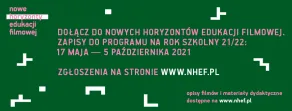

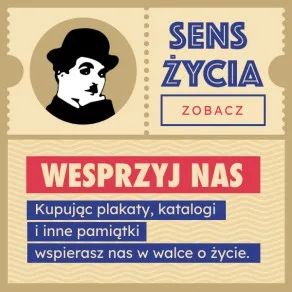
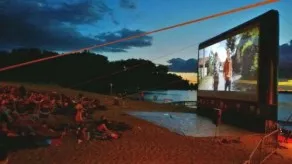
www.OpenCinema.pl
Zapraszamy do współpracy przy
organizacji kina letniego
organizacji kina letniego
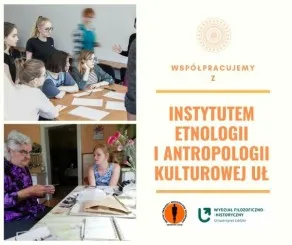

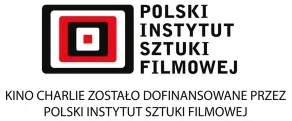
Copyright 2024 © Kino Charlie - Wszelkie prawa zastrzeżone
/
Polityka RODO
/
Polityka Cookies


